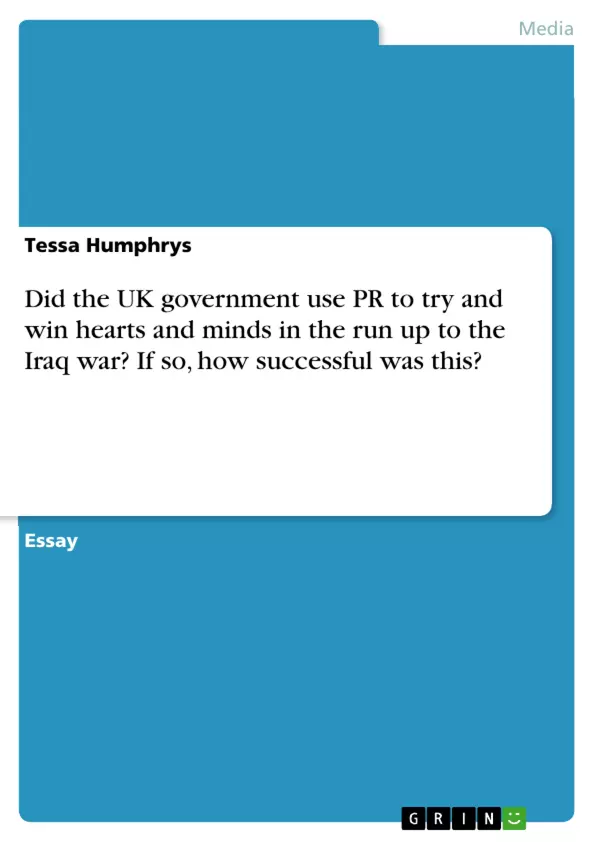The 2003 Iraq conflict was divisive and controversial. The UK government faced unprecedented levels of public protest during the run up to the conflict as well as a hostile reception from former United Nations (UN) allies over whether to join America in invading.
Winning the ‘hearts and minds’ of all stakeholders was crucial if the invasion was to be supported and justified, and the UK government undoubtedly employed public relations (PR) techniques to attempt to do just that.
This essay argues that PR plays a part in the build up of any conflict, and discusses the relationship between PR and propaganda in wartime. It puts forward Tony Blair’s role in ‘selling’ the conflict to the British public, how his own brand of public relations helped massage public opinion, and how intelligence, the issue of weapons of mass destruction (WMDs) and the use of the phrase “war on terror” were used to package the war conveniently for the public. It also examines the British media’s reporting of the build up of the conflict and questions whether it was the subject of management by the UK government, and to what extent it influenced UK public opinion on the issue.
Inhaltsverzeichnis (Table of Contents)
- Did the UK Government use PR to try and win hearts and minds in the run up to the Iraq war?
- Public Relations and Propaganda in Wartime
- Tony Blair's Role in Selling the Conflict to the British Public
- The Use of Intelligence and the Issue of Weapons of Mass Destruction (WMDs)
- The British Media's Reporting of the Build Up to the Conflict
- The Effectiveness of Public Relations in Wartime
Zielsetzung und Themenschwerpunkte (Objectives and Key Themes)
The objective of this essay is to examine the extent to which the UK government used public relations (PR) techniques to persuade the British public, and the international community, of the need for military intervention in Iraq in 2003. The essay explores the relationship between PR and propaganda in wartime, focusing on the role of Tony Blair in 'selling' the conflict to the British public.
- The role of public relations in the build-up to war
- The relationship between PR and propaganda in wartime
- Tony Blair's communication strategies and their impact on public opinion
- The use of intelligence and the issue of weapons of mass destruction (WMDs) as justification for war
- The British media's role in shaping public opinion on the Iraq conflict
Zusammenfassung der Kapitel (Chapter Summaries)
- This chapter introduces the topic of the essay, arguing that PR plays a key role in the build-up to any conflict. It discusses the relationship between PR and propaganda in wartime and outlines the key arguments of the essay.
- This chapter focuses on the role of Tony Blair in 'selling' the Iraq conflict to the British public. It explores how his communication style and messaging contributed to shaping public opinion.
- This chapter examines the use of intelligence, particularly the issue of WMDs, as a justification for war. It also discusses the use of the phrase "war on terror" as a powerful propaganda tool.
- This chapter explores the role of the British media in reporting the build-up to the Iraq conflict. It examines whether the media was managed by the UK government and how it influenced UK public opinion.
Schlüsselwörter (Keywords)
The key keywords and focus topics of the text are: public relations, propaganda, wartime, Iraq war, Tony Blair, weapons of mass destruction (WMDs), British media, public opinion, hearts and minds, persuasion, communication strategies.
- Quote paper
- Tessa Humphrys (Author), 2010, Did the UK government use PR to try and win hearts and minds in the run up to the Iraq war? If so, how successful was this?, Munich, GRIN Verlag, https://www.grin.com/document/173518



